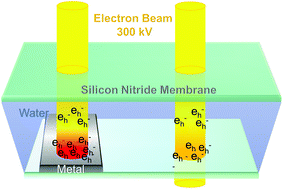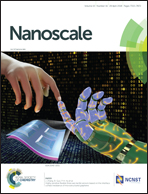Spatially dependent dose rate in liquid cell transmission electron microscopy
Abstract
The use of liquid cell electron microscopy as a quantitative probe of nanomaterial structures and reactions requires an accurate understanding of how the sample is altered by the imaging electron beam. In particular, changes in the chemical environment due to beam-induced radiolysis can strongly affect processes such as solution-phase nanocrystal synthesis or electrochemical deposition. It is generally assumed that beam effects are uniform throughout the irradiated liquid. Here we show that for a liquid cell filled with water, the inevitable presence of interfaces between water and the surrounding surfaces causes a spatial variation in the energy absorbed by the water near the walls. The mechanism for this effect is that the walls act as a source of secondary and backscattered electrons which diffuse and deposit energy in the water nearby. This increased dose rate then changes the local concentrations of radiolysis species. We quantify and compare the effects for different materials used in practical liquid cells. We show that the dose rate can increase by several times within tens of nanometers of a water/Au interface, locally increasing the concentrations of species such as the hydrated electron. We discuss the implications for materials processes that are typically triggered at the solid–liquid interface.



 Please wait while we load your content...
Please wait while we load your content...
